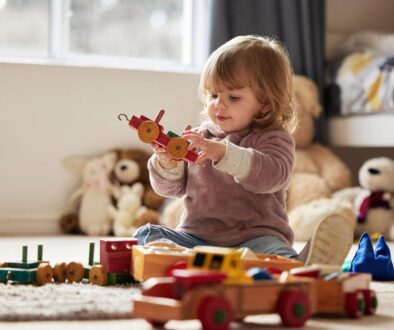Calm Down Tools

Calm down tools are specific outlets to help your child process their big feelings in a healthy way. The goal is not to teach your child to “fix” their emotions, but rather provide them with healthy coping tools that support their regulation skills when the big feelings do happen.
Adults regulate by utilizing certain tools that meet our sensory needs (touch, taste, sound, physical movement, etc). Children need similar outlets to release and process their big feelings before regulating.
How do you know when your child is starting to get escalated?
- Baseline: When your child is calm/happy. Responds to requests easily.
This is a good time to teach new regulation tools and strategies. - Middle: Your child begins to show signs of frustrations/anger or general feelings of being upset. Big emotions begin to escalate, and your child begins to experience a loss of rational thinking. They start to protest, become aggressive with toys, easily or more frequently upset.
This is right before a meltdown/tantrum will happen. If you start to notice these signs, implement calm down tools to help your child get back to baseline.
Calm down tools to try when your child is starting to get escalated:
- Pushing or pulling heavier items around the house or yard
- Push arms against wall, push hands together
- Dance party (singing, dancing, movement)
- Gross motor skills (running, jumping, big body movements)
- Calm down time (reading books, coloring, cuddling)
- Sensory play (play dough, fidget toys, water table)
- Escalated: Fight or flight response. Inability to hear logical reasoning. Logical thinking is shut off. Big feelings and behaviors occur during this time.
This is where coregulation and calm down tools come into play. Keep in mind that when little ones get to this point, the only thing they may allow you to do is to sit near them and “be” with them while they move through to the other side of that big feeling. Just staying close the them is how coregulation happens.
Calm down tools to try during a meltdown/tantrum:
- Breathing (blowing bubbles, whistle, deep breathing)
- Resistance and pressure (resistance bands, body sock, weighted toy/blanket)
- Get quiet (white noise machine, soft music, limit stimulation)
- Sensory (stress balls, ripping paper, popping bubble wrap)
- Touch… if wanted (back rubs, sitting close)
- Gross motor (crash into pillows, throw balls/bean bags into a bin)
Please keep in mind these are just some suggestions to try out. Every child is different and will respond to different calm down tools. Try to read your child’s response to certain calm down tools. For example, some children may benefit from big movement, and some may not. One thing that will benefit your child in any situation is to give them the feelings language to help them name and identify whatever emotion you observe them feeling. “I can see you are starting to feel frustrated, lets turn on some music and dance!” or “I can see that you are feeling really angry right now, I’m going to be right here if you need me.” Talking through emotions validates your child and sends the message that you see them while also showing that their big feelings don’t change or threaten your relationship.





